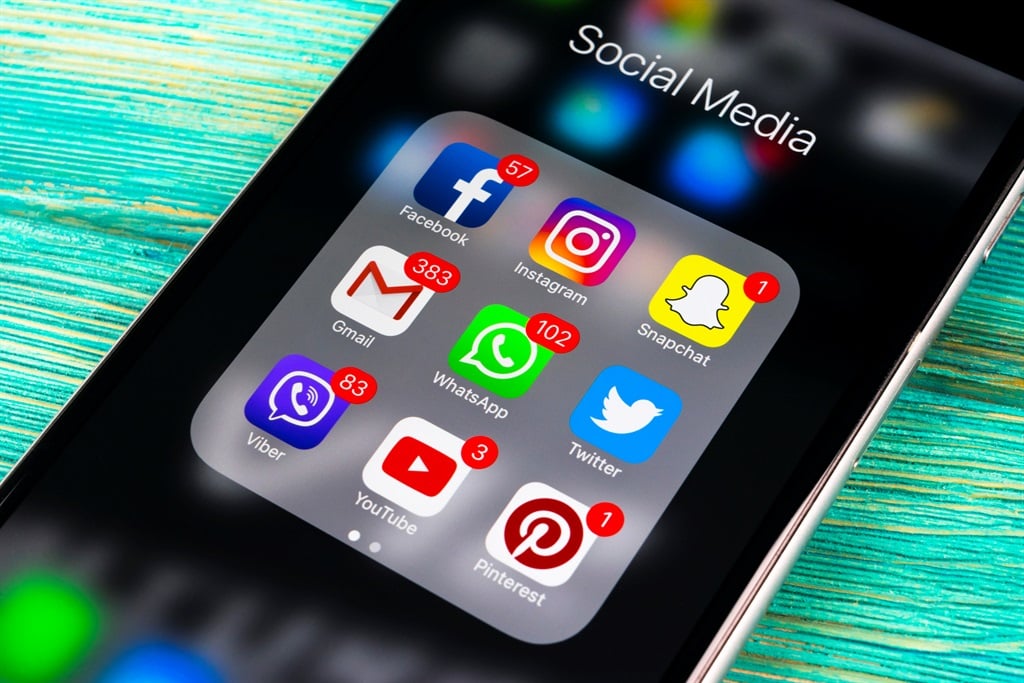
Young People and Mental Health in a Changing World is the theme the World Federation for Mental Health has elected to adopt for World Mental Health Day 2018, and the South African Federation for Mental Health has also adopted this for October 2018’s Mental Health Awareness Month.
One component of this subject is the impact of social media platforms on the mental state of young people and whether these platforms can improve, propagate or worsen mental health issues.
Indeed, this issue raises hard and important questions for young people, as well as for people in their lives who seek to protect them.
As will be demonstrated, there are positive and negative attributes to social media; however, the former can quickly gravitate towards the latter.
This is a tricky terrain, and care must necessarily be taken to keep young people safe from the tribulations that could await them because of the potential impact social media could have on their mental health.
As to the positive aspects for people with mental illness, Naslund, Aschbrenner, Marsch and Bartels (2016) report that interactions online create greater social connectedness when personal coping strategies and stories are shared with others.
This is a means through which social stigma can be challenged as it is empowering and provides individuals with a sense of hope.
Social media may also have the effect that individuals with mental illness could access interventions which incorporate support on a mutual basis and help promote engagement with treatment on a broader scale than if simply conveyed to a single individual.
These authors articulate that the benefits of utilising peer support networks through social media outweigh the risks thereof.
While this is drawn from a discussion about mental illness specifically, there is, in our view, no reason why persons with intellectual disabilities who are able to use social media should not benefit in the same way.
Social media is a mechanism through which young people can maintain contact with each other and with people older than them, even if they are physically far apart.
This is positive because the feeling of missing someone can naturally catalyse great angst; something which may serve as a stressor, leading to the potential emergence or worsening of mental health issues.
It follows that maintaining contact with someone can assist a person with a mental illness, psychosocial disability or intellectual disability in maintaining stability in their lives because having a person to connect with, perhaps even on a daily basis, is comforting, and sharing information with them makes one feel relevant.
This talks to the concept of peer support networks, as outlined above.
While the attributes of social media are undeniable, there also exist negative features. These will now be discussed.
According to Andreassen, Billieux, Griffiths et al (2016), there is an increasing body of research highlighting the addictive nature of social media. They describe a nexus between this trend and comorbid psychiatric disorders.
In a survey conducted by these authors, it was found that age was “inversely related” to overuse of this technology, that being female contributed to their overuse as did not being in a relationship.
Andreassen, Pallesen and Griffiths (2016) set forth that there exists a link between social media addiction and what they term “higher narcissism” as well as to low self-esteem- ie: in terms of the way in which people see themselves in relation to the world around them.
The amount of time young people spend on social media is also problematic. This is especially true because of all of the other things in their lives that could stand to be neglected because of excessive usage of social media.
With school, work and interpersonal relationships slipping down the agenda in the name of likes, shares and clicks, it is worrying that so much time is spent on these platforms.
According to Social Media Today, teenagers spend up to nine hours a day on various types of social media, and 30% of all time that all people spend online is constituted of social media interaction, with 60% of this being spent on a mobile device.
Social media also comes with pressures. People tend to post almost exclusively happy moments, making it appear that their lives are going particularly well.
This may sometimes be the case, but it is often a fleeting or staged moment, not representative of reality.
This can inspire jealousy or an inferiority complex on the part of people whose lives are not going particularly well.
It can make a person feel as though they cannot compete – and the nature of what is posted can make it appear as a competition.
A simple matter of “keeping up with the Joneses”, so to speak, can quickly escalate into great feelings of insecurity and hopelessness on the part of the person trying to keep up, which can become a descent which is bad for a person’s mental health.
The Guardian discusses how this “perfect life” phenomenon is particularly concerning in young girls. It discusses the impossible standards by which this demographic has to live up and the need to project your “best self.”
It discusses the editing of photographs to make life appear better than it actually is, and people going with low or no privacy settings to get more likes.
Ultimately, these practices prevent young people from being themselves and forcing themselves into a social convention into which they most likely do not belong.
This is patently damaging especially since young people are at an obviously vulnerable age and are still attempting to discover who they actually are.
Social media also renders young people vulnerable to what is known as cyberbullying.
The Cyberbullying Research Center defines this practice as “wilful and repeated harm inflicted through the use of computers, cell phones, and other electronic devices.”
It provides that the behaviour must be a) deliberate, that it must b) be repeated, that c) the person who is a target must perceive that harm had been committed against them and that d) it must be committed via an electronic device (differentiating it from traditional bullying).
According to a global online study conducted by YouGov (2015), it was found that over 60% of teens in South Africa found cyberbullying worse than face to face bullying and that one fifth of teens involved in the international survey had been cyberbullied at some stage.
A broad spectrum of sources link cyberbullying to depression, self-harm and suicide among young people.
The uncomfortable pendulum swing of good and bad influence of social media presents an uneasy juxtaposition.
Pressed up against each other and almost inextricable, the positives and pitfalls are too close together for young people, those who are a part of their lives, those monitoring their safety and those responsible for upholding their rights to rest on their laurels.
Constant vigilance is required to ensure that a young person remains safe on these platforms or the consequences can be dire.
References:
•Naslund, Aschbrenner, Marsch and Bartels (2016): Cambridge available at https://www.cambridge.org/core/journals/epidemiology-and-psychiatric-sciences/article/future-of-mental-health-care-peertopeer-support-and-social-media/DC0FB362B67DF2A48D42D487ED07C783 accessed on 9 September 2018.
•Andreassen, Billieux, Griffiths et al (2016): Psycnet Available at http://psycnet.apa.org/record/2016-13379-006 accessed on 9 September 2018.
•Andreassen, Pallesen and Griffiths (2016): Science Direct available at https://www.sciencedirect.com/science/article/abs/pii/S0306460316301095 accessed on 9 September 2018.
•Social Media Today available at https://www.socialmediatoday.com/marketing/how-much-time-do-people-spend-social-media-infographic accessed on 9 September 2018.
•The Guardian available at https://www.theguardian.com/society/2017/aug/23/girls-and-social-media-you-are-expected-to-live-up-to-an-impossible-standard accessed on 9 September 2018.
•Cyberbullying Research Center available at https://cyberbullying.org/what-is-cyberbullying accessed on 9 September 2018.
•The Guardian available at https://www.theguardian.com/society/2015/sep/22/cyberbullying-teenagers-worse-than-drug-abuse-says-report accessed on 30 August 2018.
•Bullying.co.uk available at https://www.bullying.co.uk/cyberbullying/effects-of-cyberbullying/ accessed on 30 August 2018.




 Publications
Publications
 Partners
Partners








